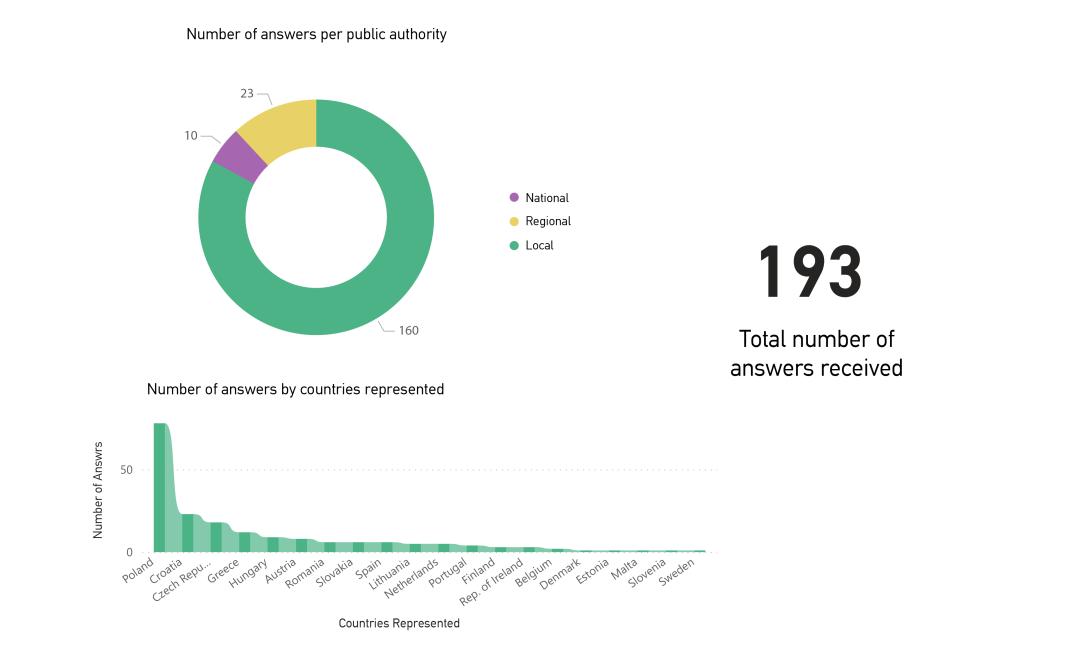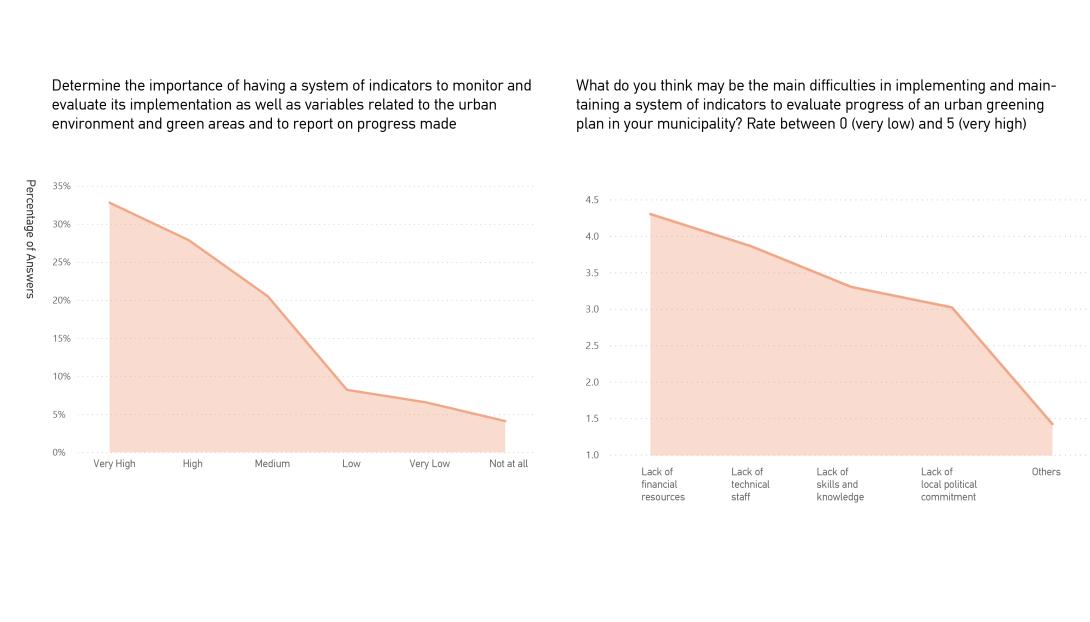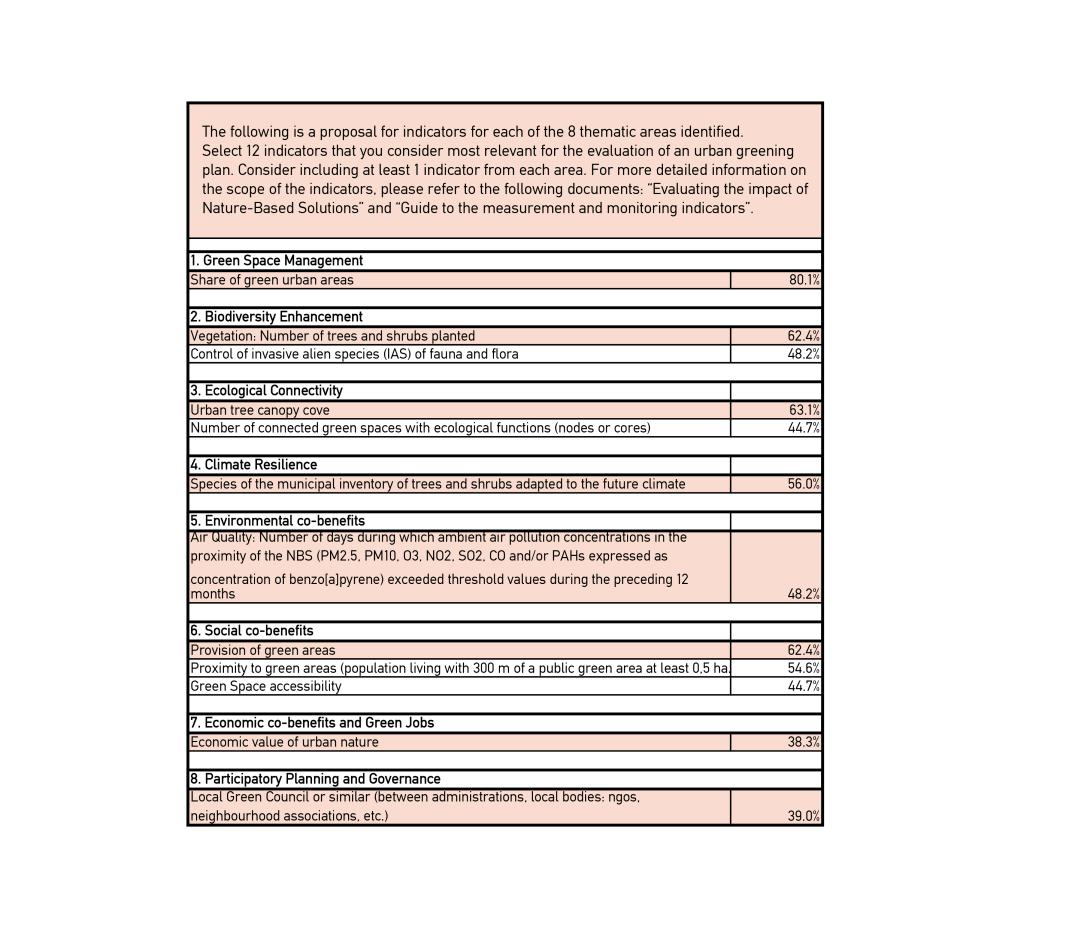
Unveiling the Path to Urban Greening: Insights from the Greening Cities Partnership Survey
This survey is a critical step in the Partnership’s development of its Action Plan, which will outline specific measures to support urban authorities in addressing challenges identified within the scope of the theme "Greening Cities". The partnership’s focus on four critical sub-themes— Implementing Green Infrastructure and Nature-Based Solutions, Methodology for Quantifying the Demand for Green Infrastructure at a Local Level, Funding Models and Indicators Systems—underscores its commitment to addressing the multifaceted challenges of urban greening.
Survey Overview
Distributed across the European Union and the European Economic Area, the survey collected responses from 193 authorities from 160 local, 23 regional, and 10 national authorities. The diversity of participation, encompassing 20 different countries, underscores the widespread recognition of the importance of urban greening. Poland led with 40% of the responses, followed by Croatia (12%), and the Czech Republic (9%), highlighting varying levels of engagement across the EU while providing a rich dataset for understanding the current status and challenges of implementing green infrastructure and nature-based solutions.

Survey Overview Statistics
Main Take Away Points
Implementation of Green Infrastructure Plans and the EU Nature Restoration Law
Urban areas face significant challenges in implementing green infrastructure (GI) plans, including urban densification, lack of comprehensive planning and regulations, not effective monitoring and evaluation, lack of capacity for the proper maintenance of plantation and challenges regarding implementing greening into private properties. Yet, the survey highlights a unified effort to meet the EU Nature Restoration Law's targets, despite the absence of established satisfactory levels for GI implementation. The collective response underscores a need for further validation and tailored actions to support urban greening efforts effectively.
Methodology for Quantifying the Demand for Green Infrastructure
A striking 86% of local respondents expressed the willingness to adopt methodologies or tools to assess green infrastructure demand, pointing to a strong need to develop systematic approaches for integrating green elements in urban planning. However, the survey also revealed a gap at the national and regional levels, with a majority indicating a lack of updated frameworks to support the EU Biodiversity Strategy 2030. This discrepancy highlights the necessity for consistent methodologies and tools that cater to the local context.

Responses on the Methodology for Quantifying the Demand.
Funding Models
The survey confirmed the critical role of EU and national funding in supporting GI projects, with a notable emphasis on the need for more structural funds and Private Public Partnerships (PPPs) as viable financial models. This insight aligns with the partnership’s objective to enhance funding strategies, supporting urban authorities in greening their budgets and leveraging market-based instruments.
Indicators Systems for Monitoring Urban Greening Plans
Over half of the respondents have developed Urban Greening Plans, although in diverse formations, utilizing a variety of indicators to monitor progress. The emergence of eight common indicators from the survey responses highlights a consensus on the essential metrics for assessing urban greening efforts. However, challenges such as lack of technical staff, skills and knowledge and financial resources underscore the need for support in implementing and maintaining effective indicator systems.


Responses on the Indicators Systems.
Conclusion
The survey conducted by the Greening Cities Thematic Partnership offers invaluable insights into the current state and challenges of urban greening across Europe. The findings underscore the necessity of an integrated approach that encompasses robust systems to facilitate the implementation of Green Infrastructures, effective methodologies for quantifying green infrastructure demand, diversification of the funding models focusing on market-based instruments, and comprehensive indicator systems for monitoring progress. As the partnership moves forward with developing its action plan, the survey results will play a crucial role in shaping specific measures to support urban authorities. This collaborative effort marks a critical step towards realizing the vision of greener, more sustainable cities across the EU, aligning with broader sustainability objectives and enhancing the well-being of urban populations.
The journey of the Greening Cities Partnership of the Urban Agenda for the EU continues with a pivotal two-day, in-person meeting scheduled in Pontevedra on April 4th and 5th, dedicated to finalizing its proposal for the draft Action Plan.
Stay connected for future updates!